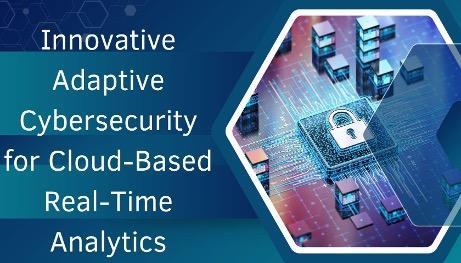Innovative Adaptive Cybersecurity for Cloud-Based Real-Time Analytics
In an era where data moves at the speed of business, securing cloud-based real-time analytics platforms is more crucial than ever. Shahnawaz Khana renowned expert in cybersecurity and data systems, brings forward cutting-edge insights on adaptive cybersecurity strategies. This piece unpacks the advanced methods essential for protecting dynamic environments and staying ahead of ever-evolving cyber threats.
Understanding Cloud-Based Real-Time Data Analytics
Cloud-based real-time data analytics platforms revolutionize how organizations process and gain insights from vast data sets. The scalability and flexibility of cloud infrastructure enable efficient data handling across distributed systems. However, this advancement introduces unique security challenges that traditional static measures cannot adequately address, highlighting the need for adaptive, modern cybersecurity strategies to protect these dynamic environments.
Limitations of Conventional Cybersecurity Approaches
Traditional cybersecurity methods, relying on rule-based systems and periodic updates, primarily focus on perimeter defense. However, in cloud environments, this approach proves ineffective due to distributed data processing and expanded attack surfaces. These limitations make conventional systems insufficient for detecting advanced threats, such as zero-day vulnerabilities and advanced persistent threats (APTs), highlighting the need for modern, adaptive security solutions.
Adapting to a Dynamic Threat Landscape
Adaptive cybersecurity offers a paradigm shift by using real-time intelligence and machine learning to monitor and respond to threats as they evolve. This approach employs AI-driven anomaly detection and automated response mechanisms, allowing organizations to preemptively adjust their defense strategies. The ability to learn from new data patterns and threat intelligence ensures that security measures stay effective against emerging cyber risks.
Key Features of Adaptive Cybersecurity Strategies
1. AI and Machine Learning Integration
AI and machine learning algorithms are essential to adaptive cybersecurity frameworks. They analyze vast amounts of data to identify anomalies and patterns that indicate potential threats. Unlike static systems, these models continuously evolve, detecting novel attack vectors and zero-day exploits. Real-time threat detection enables rapid response, minimizing the potential impact of breaches.
2. Zero-Trust Security Architecture
The zero-trust model assumes that no user or device is inherently trusted. Continuous verification and multi-factor authentication are employed to secure data access points, regardless of network location. This principle of least privilege ensures users only have access necessary for their roles, mitigating the risk of lateral movement within systems.
3. Behavioral Analytics for Proactive Monitoring
Behavioral analytics establish baseline patterns of normal user and system activity. Continuous monitoring helps detect deviations that may signify compromised accounts or insider threats. The framework dynamically adjusts security policies in real time, triggering additional authentication measures or limiting access when anomalies are detected.
4. Automated Incident Response
Adaptive cybersecurity frameworks incorporate automated incident response to manage potential breaches effectively. These systems initiate rapid containment strategies such as isolating affected nodes and blocking suspicious access attempts. Predefined remediation playbooks allow for prompt system restoration and vulnerability patching, reducing the operational load on security teams.
Overcoming Real-Time Analytics Challenges
Real-time data analytics platforms demand low-latency processing, which intensive security protocols can disrupt. Balancing comprehensive security measures with performance is vital. Adaptive cybersecurity frameworks optimize encryption and access controls to maintain high processing speeds while securing data. Innovations such as selective encryption and tokenization ensure compliance without hindering analytics performance.
Advantages of Adaptive Cybersecurity Frameworks
- Enhanced Threat Detection and Response: AI-driven systems identify potential threats with higher accuracy and adapt to new attack strategies.
- Scalable Protection: As organizations scale their data analytics platforms, adaptive security strategies scale alongside, providing consistent defense.
- Regulatory Compliance: Integrating compliance mechanisms aligned with global standards (e.g., GDPR, CCPA) simplifies audits and reporting while maintaining robust security.
- Reduced Human Intervention: Automated response mechanisms lower the burden on security teams, enabling them to focus on strategic initiatives.
In conclusion, Shahnawaz Khan‘s adaptive cybersecurity framework underscores the need for evolving security practices to keep pace with cloud-based real-time analytics. By incorporating AI, zero-trust principles, and automated responses, organizations can strengthen their defenses and safeguard critical data assets. As cyber threats become more sophisticated, adaptive strategies ensure that security infrastructure remains resilient and fosters innovation and efficiency. Continuous progress in this field is vital to maintaining the integrity of cloud analytics and staying ahead with intelligent, adaptive systems that meet modern challenges.


Comments are closed.